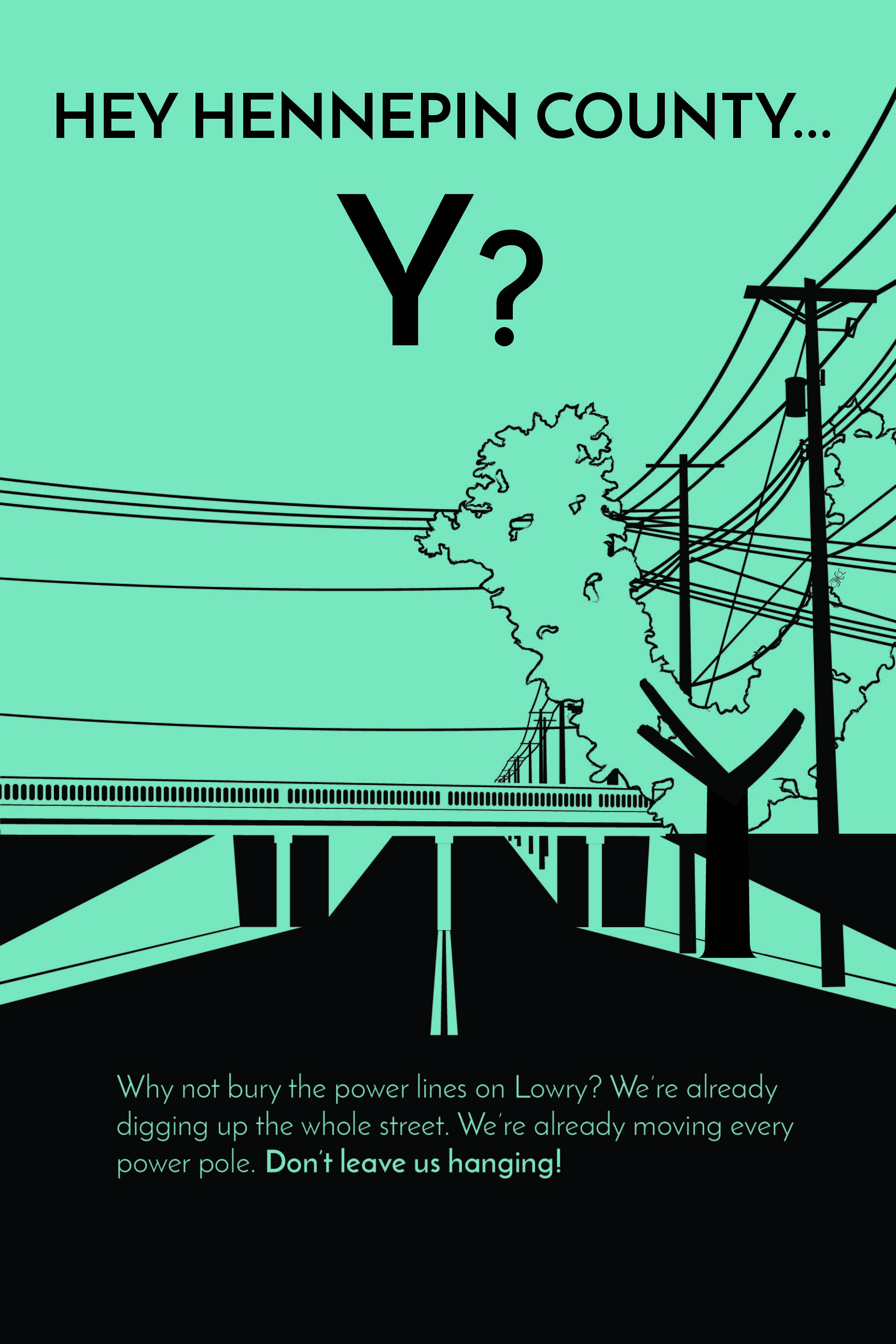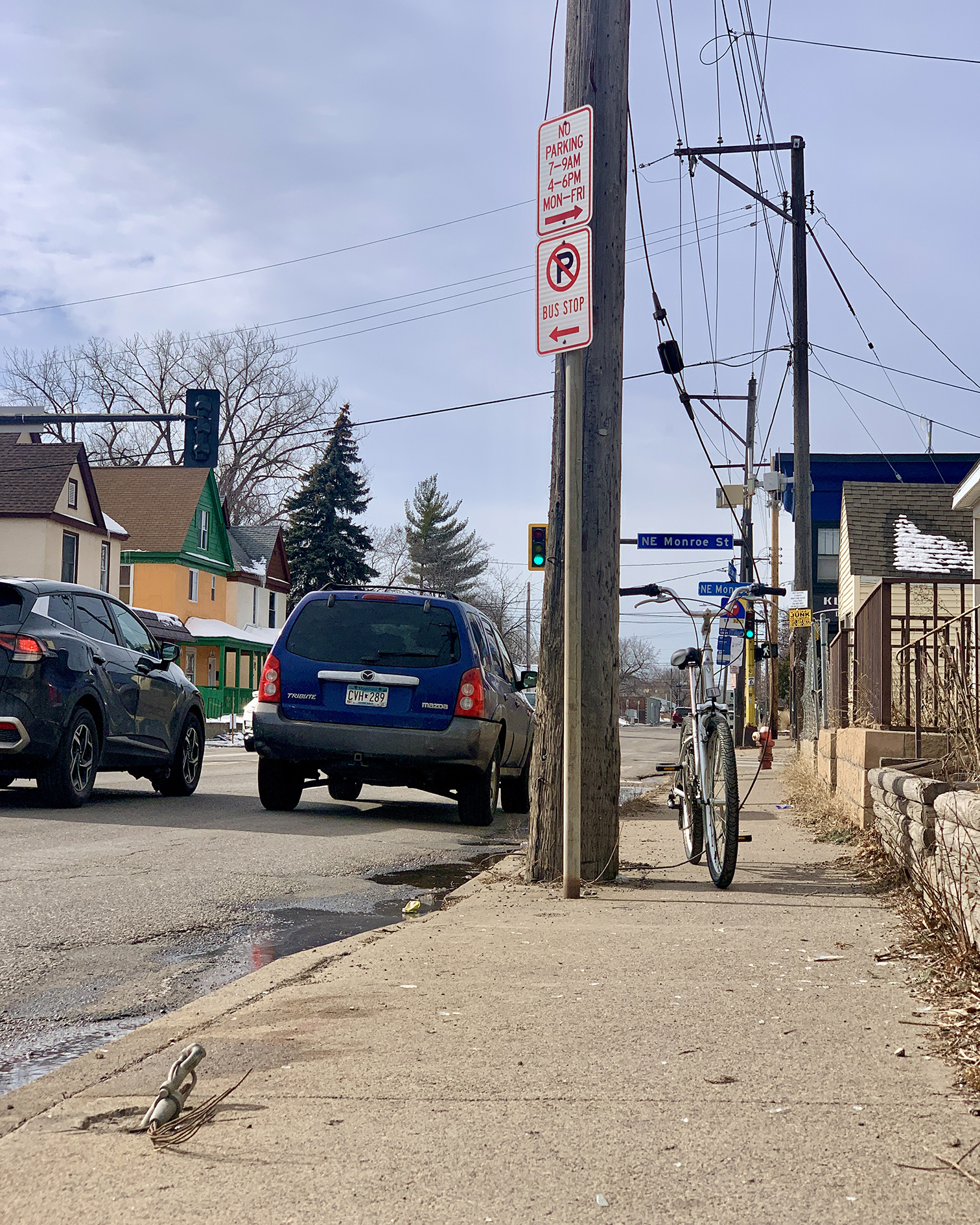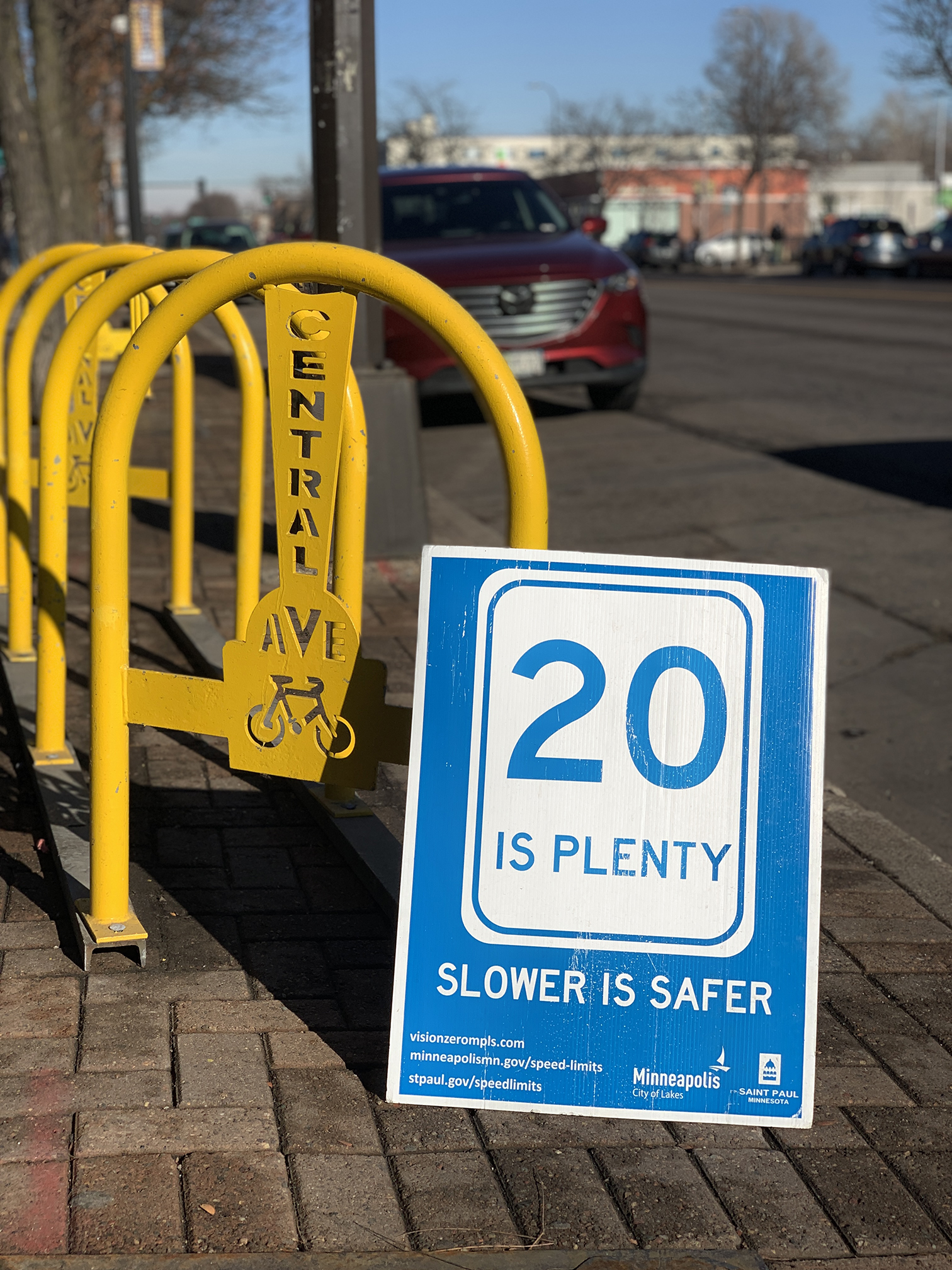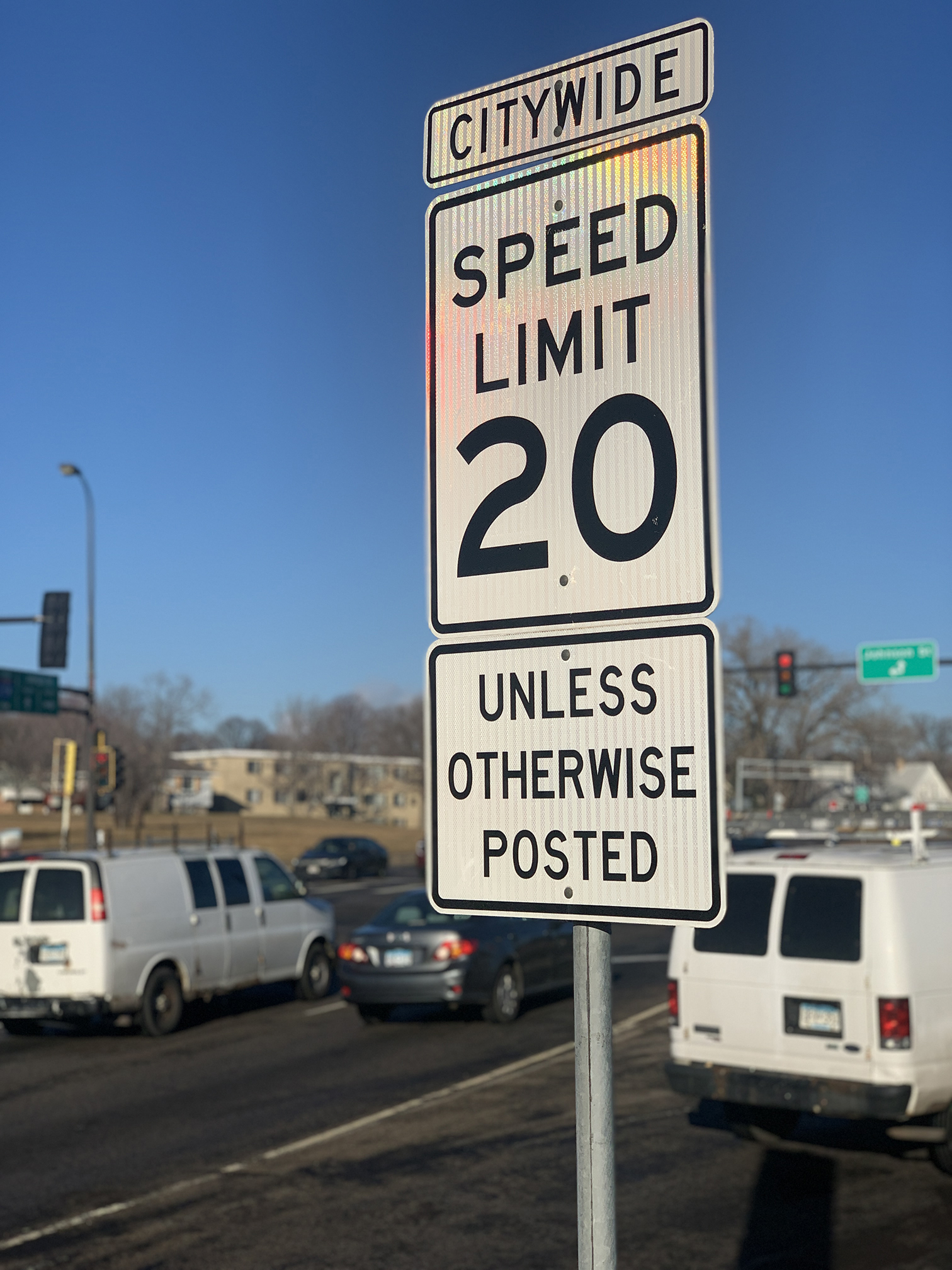
Our Last Chance on Lowry
TLDR - Hennepin County is digging up NE Lowry Ave for perhaps the last time this century. - Minneapolis’ 2040 plan calls for Xcel to bury city lines as opportunities arise. - Lowry may end up as one of the few streets in Mpls with standing power lines. - If we don’t bury Lowry’s AMPLE power lines now, Lowry will be cluttered with lines for the rest of our lives. - Lowry’s power lines are unsightly and have a negative impact on property values. - Power lines on poles are vulnerable to storms which block traffic, cause power outages and property damage, and create dangerous conditions from falling lines and power poles. - Hennepin County doesn’t want to bury the power lines because of the upfront costs. - This means Lowry will always have power lines instead of trees. Also... - Lowry’s planned shared use path puts pedestrians on a glorified sidewalk with ebikes at speeds up to 30 mph. Collisions at this speed result in the death of a pedestrian 50% of the time. - The shared use path also forces riders at every speed to slow down or stop at almost every intersection regardless of red or green light. - Car drivers often fail to see (or even look for bikes entering an intersection from a sidewalk, a condition that would be corrected by a protected bike lane adjoining the car lanes. - Lowry’s planned shared use path means it will still be safer for riders to be in the car lanes than to use the provided bicycle infrastructure. - Bikers who ride for transportation will probably continue to avoid Lowry despite a bunch of money spent on bicycle infrastructure. - Car infrastructure is generally the most expensive and least efficient way to move people in a city, especially at peak times. - We are not building something that is good enough to entice drivers to replace car trips. Another missed opportunity to make our city people focused instead of car centered. Contact... irene.fernando@hennepin.us kelly.agosto@hennepin.us elliott.payne@minneapolismn.gov 
[NOTE: The digging is set to begin in April. We have been raising the flag on these issues for two years. It's not too late. Our neighborhood (and our city) need to speak with one voice. Write to the email addresses above.] Hennepin County is finally finishing the redevelopment of Lowry Avenue (a county street even in the midst of Minneapolis). This is fantastic and the plan is good. But this same project that started in North Minneapolis took out blocks of homes and businesses in order to widen N Lowry for more cars. The people left behind got a revamped library, a kind of townhouse apartment complex, and more traffic. Nothing compared to the neighborhood that was lost. https://www.hennepin.us/residents/transportation/lowry-corridor The effect on North Minneapolis was so negative, the plan was so bad, just knowing that it was coming for Northeast caused severe damage to the businesses and properties on Lowry. What would you pay for a house on Lowry if you thought the government was going to use eminent domain to take it away and tear it down? Why would you sign a lease and invest in a corner that wouldn't exist in a few years? So the stakes are high for our neighborhood. It's critical that we get this right. North Lowry was a resounding urban renewal-style catastrophe. Because of this, the plan for Northeast has shifted away from a traffic focused. This is a big shift for our city which also recently abolished parking minimums and voted to allow more housing. And even though we've learned a lot from what was done to North Minneapolis, we're still missing the target. The revamped NE Lowry redevelopment plan reduces car lanes (and traffic and noise and speed and pollution and danger) and makes Lowry a more hospitable corridor for walking and biking and shopping and living in our neighborhood. We actually want this plan to happen. It's mostly a good plan. It's a step in the right direction. But it doesn't reach the finish line. And it will stay there, just short of great, for the rest of our lives. This really is our last chance to get Lowry right for the next half century or more. Two missed opportunities for Northeast: 1) Buried power lines. Is it a big deal? It's actually a bunch of small deals that add up. Power lines are ugly. Turns out black electric cords snaking across the landscape don't enhance the view and they hurt property values. (And did you know, there is no regulation forcing telecoms to remove decommissioned lines. The unused lines are still up there.) Exposed power lines are dangerous. Storms drop them on people and cars and houses. This is how fires get started. Occasionally people get injured or die. Roads get blocked. Traffic gets snarled. And putting them back up costs money. Lines don't even have to drop to start trees on fire. This is why we have Y-shaped trees in places where giant oaks and elms have been disfigured to keep them safe from wind-blown electrical conduits. This is why we plant tiny ornamental boulevard trees instead of shade-providing, carbon-capturing, transpiration-cooling, property value-increasing, neighborhood-defining TREES. I mean mighty trees, the big ones that stand for generations, that arch over our streets, that make us drive slower in the fall because of sheer grandeur, trees that are habitats all on their own, trees that lower our energy costs because green cities really are cooler than paved cities, trees that make our streets safer because interesting streets actually keep drivers engaged, trees that take on so much water they help prevent flooding while making our water cleaner and our soils healthier, trees that...well, trees that make our lives better in so many ways. Or do we want exposed power lines? Buried power lines can go just about anywhere. They can go where they need to go. Power poles have to stay out of the street. They have to abide by right of ways and make corners. Or worse, the world has to go around the power lines. You think a Y-shaped oak tree is lame, try getting a bicycle or a wheelchair around a power pole planted in a narrow sidewalk with no boulevard, traffic on one side, and a wall on the other side. This is the apocalyptic hellscape that exposed power lines has provided to Lowry so far. 
But I hear what you're thinking: what about the money? How much is this gonna cost to bury the power lines? It's true, burying power lines is more expensive than hanging them up for all to see, at least in the beginning. And some houses will need to upgrade their connections to the public lines. That's real money for individuals and real money for tax payers. But we will never be less expensive than it is right now. Hennepin County is tearing up the whole street. Sidewalks included. And every pole will have to be moved. And every line will have to be rehung. If not now, when? By the time they rip up Lowry again for another try, we'll all be dead. One South Mpls project had an estimated additional cost of about $100 per customer. Would you pay $100 to have exposed power lines in front of your house buried? https://m.startribune.com/xcel-told-to-bury-new-power-lines-across-south-minneapolis/137227218/ I have to admit, when the power goes out at Recovery Bike Shop, Xcel almost always has it back up in minutes. Like single digit minutes. It's shockingly fast. But that kind of response time is EXPENSIVE. That's crews of people and equipment that are on call 24 hours a day just waiting around for something to go wrong. Or these are teams that have to abandon ongoing projects to get to a downed line. Xcel pays for that. Which means we all pay for that. And why is the power going out in the first place? Cars don't hit buried power poles. Storms don't drop buried power lines. And wind can't cause electricity to arc into majestic tree canopies from buried power lines. Underground power is reliable power. The comprehensive Minneapolis 2040 Plan calls for Xcel to bury power lines. And if Lowry doesn't get this extra push now, it's likely to end up as one of the last streets in Minneapolis with standing power lines while the rest of the city's lines get neatly tucked away underground. The NE Lowry redevelopment plan needs buried power lines. It also needs a real bike lane. That's the second thing the Lowry plan is missing. Hennepin County's plan for a shared bicycle and pedestrian path is a glorified sidewalk. It's not practical transportation. It's dangerous. It's not working on Johnson and it won't work on Lowry. 2) Lowry is going to be the last major street in Minneapolis built before the ebike "arrives." As a bike shop and as a group that pays close attention to transportation issues, we're prepared to make a prediction: someone is going to die on a Minneapolis shared use path. The Hennepin County plan for NE Lowry Ave includes a combined bicycle and pedestrian shared use path. These are glorified sidewalks and don't serve riders or pedestrians well (as we've seen on Johnson). Ebikes really are going to save the planet. They are going to have a way bigger impact than we realize. Ebike affordability and convenience creates the practical transportation that is going to make it possible to forgo the second family car. And when that happens, some people are going to let go of the first family car. And when that happens, we'll start turning the tide on driving and traffic and pollution and housing/transportation costs and climate change and love will rule. At least we're pretty sure. In the meantime, unregulated (but legal) ebikes are capable of doing 30 miles an hour and they're flying down the bike paths...and the shared use paths. Minneapolis' goal is to create an All Ages and Abilities Network for people on bikes. As such, riders should "only share space with cars on quiet low-speed streets or on neighborhood greenways." https://sdg.minneapolismn.gov/design-guidance/bikeways Of course the logic here is that a 5,000 pound SUV becomes increasingly dangerous the faster it's going. To keep cars from killing people traveling by bike or walking, we should physically separate these modes of transportation. Sound logic. Laudable. Necessary. Minneapolis and Hennepin have not adapted to the coming future and they are unintentionally signaling to ebike riders that they should be on the sidewalk with pedestrians. But an ebike becomes increasingly dangerous the faster it goes as well. Imagine the average 8 year old trundling along on two wheels. The training wheels came off earlier this spring. They're still a little wobbly, but full of confidence and pride. They're pushing their limits and riding out ahead of their parents just as far as they're allowed. You can see where we're going with this. Coming along the other way is an ebike. That rider is in the officially designated space for bicycles. They're avoiding the cars in the street. They're not interfering with traffic. They're "doing everything right," by some standards of public opinion. Except they're doing 30 miles an hour, which the bike is fully capable of doing and no one has made it clear to the rider that the shared use path has a 10 mph speed limit, and that bikes are still allowed to ride in the street even though there is a bike path. In essence, bike riders of all sorts, still think they belong on the bike path no matter how fast they're going. To an unsophisticated ebike rider, the bike path seems safer than the street. NE Lowry, one of Northeast's few through streets, is where commuters want to be. And since the Lowry plan doesn't call for a protected bike lane, riders at all speeds are going to cross paths with pedestrians. 
A pedestrian hit by a car at 30 miles an hour has a 50% chance of survival. This is the reason Minneapolis recently dropped its municipal speed limit to 20 miles per hour where a ped's life expectancy goes up to 90%. 
I don’t have the stats for ebikes moving at 30 mph, but it's not gonna be good. Hennepin County's plan for a combined use path allows space for car lanes and boulevards and accessible sidewalks and property right of ways and lots of good things. Combining riders and walkers on a shared use path, while well-meaning, is treating riders and peds like second class citizens. They get the leftover scaps (if there are any) after the cars have been allowed to feast. This is infrastructure that doesn't actually serves either well. A shared use path is recreation and not transportation. It's a sidewalk, not a bike path. And sidewalks are dangerous and impractical for bikes. Here's why. Sidewalks at intersections are where bike riders go to die. A rider is safer in a car lane than entering an intersection from a sidewalk. Drivers look at the car lanes for cross traffic. Bike riders coming from the sidewalk (which is 100% what this shared use path is going to look and feel like) do not get noticed. This means riders approaching a GREEN light will have the right of way and still have to slow or stop to make sure cars turning right have really seen them. The right of way means nothing if a 5,000 pound SUV takes it from you. The shared use sidewalk is also right up against the buildings on Lowry. This means that a rider can't see who or what is approaching the intersection around the corner. Another bike rider on the sidewalk, a pedestrian, a parent with a stroller could step out into the rider’s path at the last second even at nearly zero miles per hour and there would be no time to avoid a collision. In this situation, the only safe strategy is to slow down to almost zero at every corner. Not at all practical for transportation. A protected bike lane in the street would remedy both of these issues. As it is, the shared use path will force riders into the car lanes again, where you are more likely to be seen by cross traffic, where you have the space to see approaching cross traffic, where you can move through intersections without slowing down. It's important to create the place we want to live because this is the place where we live. The Hennepin County plan for Lowry means some riders will avoid the shared use path and be in the street anyway. But most riders will still probably avoid Lowry entirely. This means more people in cars, more traffic, more wear and tear on our infrastructure, increased costs, increased crashes, increased noise and pollution. NE Lowry needs a protected bike lane. Ebikes are going to change the world. The shared use path is a waste of resources. It signals that non-car transportation has is not real transportation in Minneapolis and that we should all just get in our cars and add to the rush hour traffic. A big sidewalk that increases the risk of a car/bike collision at every intersection is not good enough. This strategy is not good enough to get drivers out of their cars, which is really what we need to do to address traffic issues, reduce infrastructure costs, deal with noise and pollution, and to make our streets safer and more livable. But while we're digging up the entire avenue anyway, let's at least bury those power lines. I mean, that's a no brainer. Minnesota supports burying power lines: https://www.fema.gov/case-study/underground-power-line-conversion-minnesota
|
|||||||